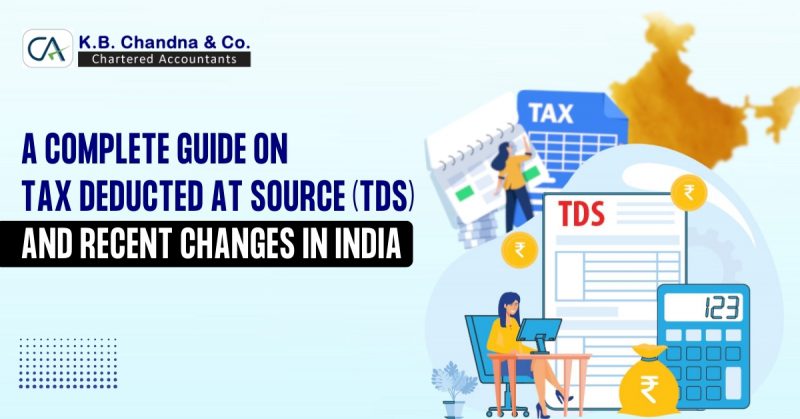A Complete Guide on Tax Deducted at Source (TDS) and Recent Changes in India
Tax Deducted at Source (TDS) is a crucial mechanism in India’s taxation system, ensuring timely collection of taxes by deducting a certain percentage from specified payments at the source itself. This guide provides an in-depth understanding of TDS, its applicability, and the recent changes introduced to enhance compliance and efficiency.
What is TDS?
TDS is a method of tax collection where a person (deductor) responsible for making specified payments deducts tax at the source and remits it to the government. The recipient (deductee) receives the payment net of TDS and can claim credit for the amount deducted against their tax liability.
Applicability of TDS
TDS applies to various payments, including:
- Salaries
- Interest payments by banks
- Rent payments
- Professional fees
- Commission payments
The rates of TDS vary depending on the nature of the payment and the recipient’s status (individual, company, etc.).
Recent Changes in TDS Provisions
The Indian government has introduced several amendments to the TDS provisions to streamline tax collection and reduce evasion. Notable changes include:
- Reduction in TDS Rates: Effective October 1, 2024, the TDS rate under Section 194G, which pertains to commission on the sale of lottery tickets, has been reduced from 5% to 2%. Similarly, the TDS rate under Section 194-IB for certain individuals and Hindu Undivided Families (HUFs) making rental payments has been lowered from 5% to 2%.
- TDS on Interest from Government Securities: From October 1, 2024, a 10% TDS is applicable on interest earned from Floating Rate Savings Bonds, 2020 (Taxable), and any notified security of the central or state government.
- TDS on RBI Floating Rate Bonds: Interest exceeding ₹10,000 per month on RBI floating rate bonds is now subject to TDS. This provision came into effect on October 1, 2024.
Compliance Requirements
Entities responsible for deducting TDS must:
- Obtain a Tax Deduction Account Number (TAN).
- Deduct the appropriate amount of tax at the time of payment or credit, whichever is earlier.
- Deposit the deducted tax with the government within the prescribed time frame.
- File periodic TDS returns detailing the deductions made.
- Issue TDS certificates to the deductees, enabling them to claim credit.
Implications for Taxpayers
Taxpayers should be aware of the TDS provisions applicable to their income sources to ensure accurate tax credit claims. Regularly checking Form 26AS, which reflects TDS credits, is advisable to verify that all deductions have been appropriately accounted for.
Conclusion
Understanding TDS and staying informed about recent changes is essential for both deductors and deductees to ensure compliance and optimize tax liability. The recent amendments aim to simplify the tax deduction process and enhance transparency in tax collection.

